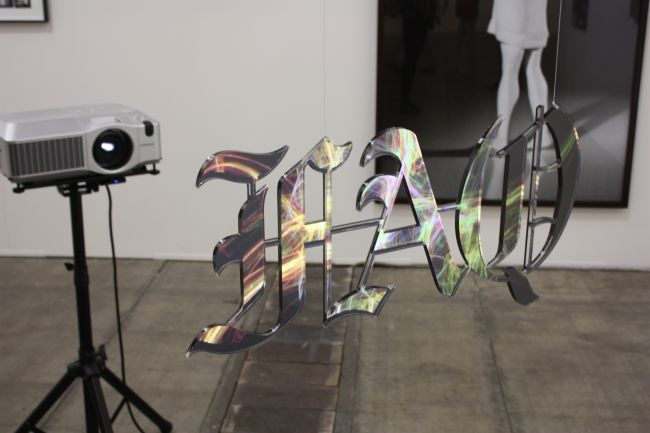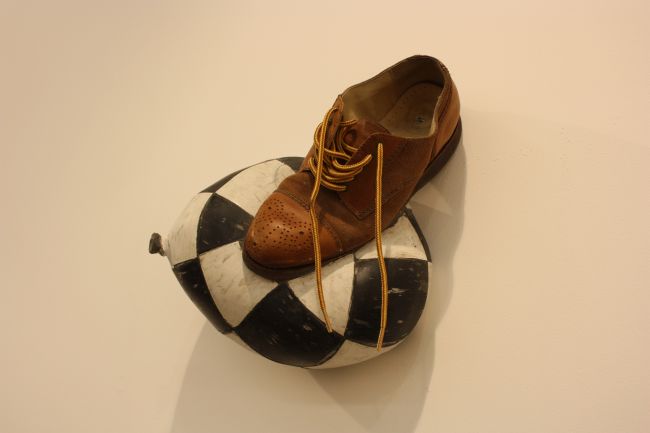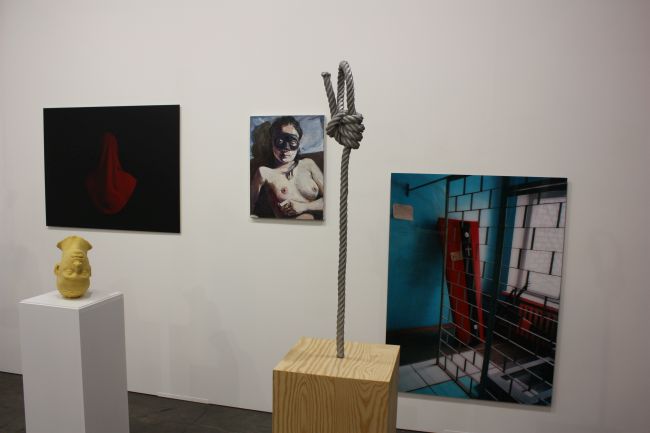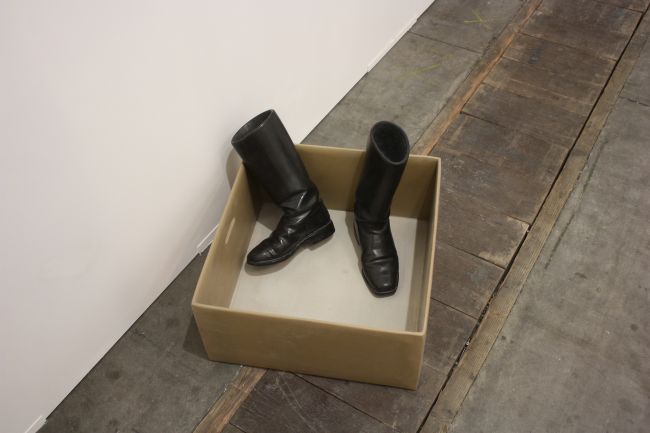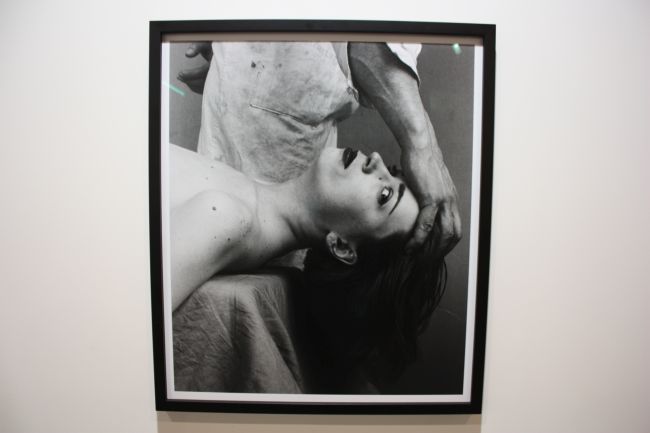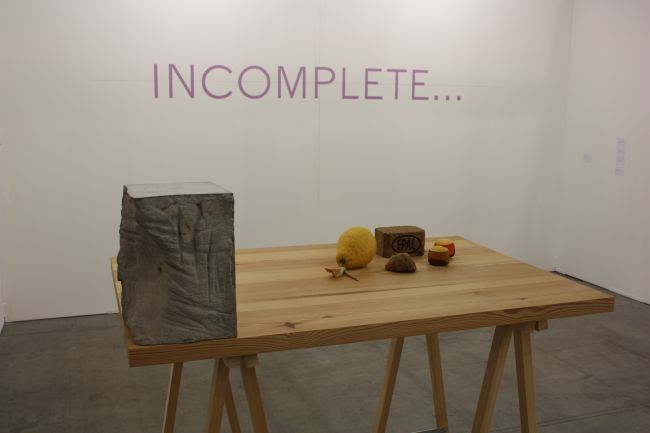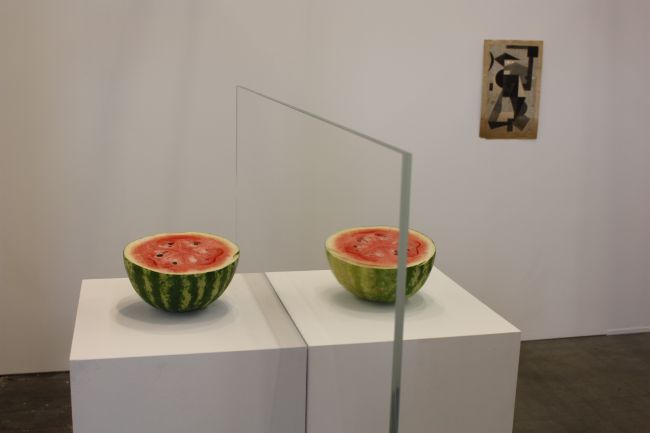
A Retrospective of Art Brussels 2014
01/05/2014
Photos:
Innovation – that seems to be the key word with which to describe Art Brussels 2014. The 32nd edition of the fair just closed its doors on Sunday, once again revealing its uniqueness among other large international art fairs. For some time now, Art Brussels has focused on redefining the art fair as such by challenging the traditional understanding of the genre, i.e, as a purely commercial venture that serves as a playground for the old and large, established galleries and wealthy collectors – whom they try to attract with big names worth millions. This has been particularly evident since Katerina Gregos – the independent Greek-born and Brussels-based curator whose curatorial experience includes, among others, the Danish Pavilion at the 54th Venice Biennale, Manifesta 9, and recently, the Göteborg International Biennial in Sweden, and who has now been appointed director of the Belgian pavilion for the next Venice Biennale – took over the position of Artistic Director of the fair last year.
The fair has indeed succeeded in developing a very distinct profile. Last year was already a huge success, and it appears that this year has been, too, in terms of both artistic and creative ambitions, and in the number of visitors – which increased by 30 percent from last year, when the number of visitors reached over 30,000. Art Brussels has certainly become one of the most prestigious art fairs and has cemented its position among the top five internationally, with 60 galleries just on the waiting list. At the same time, it also differs from many other art fairs by striving to establish itself as a place for discoveries. There are a large number of emerging artists and galleries among those participating, and an effort has been deliberately made by the fair to avoid major best-selling artworks and flashy names – which often steal attention and make the headlines at the fairs.
Pennacchio Argentato at Wilkinson Gallery, London
Mariondecannnière, Antwerp
The fair is distinctly European – 88% of the twenty-seven participating countries were from Europe, with the largest number of galleries coming from Belgium, France and Germany. The question may arise as to whether this is an attempt to build a distinct European identity in a globalized world. However, there were a whole four galleries from Dubai, and fourteen from the USA as well. Two galleries from the Baltic countries were given an opportunity to participate this year – Galerija Vartai from Lithuania, and Alma from Latvia. Scandinavia’s representation was limited to Norway’s Galleri Brandstrup and OSL contemporary.
Galerija Vartai, Vilnius

Alma, Riga
The fair was divided into five different sections, the goal being to help the visitor navigate around the event – something that can often be difficult at large art fairs with huge numbers of galleries and overwhelming numbers of artworks. Of the 190 galleries participating this year, 64 were new at the fair, with almost half of the artists being emerging and younger generation artists whose work was exhibited in the YOUNG section. The YOUNG section was placed in one of the two large exhibition halls, while the other hall, where almost all of the PRIME-section galleries could be found, contained the more established galleries, such as Gladstone Gallery and Marlborough Contemporary. The hall containing the YOUNG section was, without a doubt, the most interesting and surprising part of the fair. Some of the most innovative and exciting galleries could be found there, as well as a number of the more established ones, like Aeroplastics Contemporary from Brussels, for example, which seemed to attract a great deal of attention. Some truly breath-taking works in a wide range of media were presented in this hall, but with strikingly few paintings among them – or at least, what traditionally is defined as painting. This made it quite unlike many other art fairs, and it seemed to be a general trend at this year’s Art Brussels overall.
HeHe at Aeroplastics, Brussels
Aeroplastics, Brussels
Recycle Group at Galerie Suzanne Tarasieve, Paris
It was also rather interesting to note the differences between the invited guests and the atmosphere in each of the two halls on the opening day of the fair – which was on Thursday, 24th April this year, and not on a Wednesday like in previous years. The YOUNG section seemed to be almost bursting with creativity and energy. The invited guests were also much younger and more relaxed compared to those in the other hall, who were obviously wealthier and more typical of the usual crowd at art fairs. The PRIME section was also where the first deals were made – already prior to the opening, a work by the American artist, Haim Steinbach, and which was presented by Stephane Simoens from Knokke, was sold to a large collection abroad. At Thomas Krinzinger, a painting by Secundino Hernández (Spain) was sold to a German collector for 29,000 €. Just on the opposite side, at Continua from Beijing, a work consisting of two shattered mirrors created by Pistoletto, and priced at 280,000 €, was already reserved in the first hour.
Pistoletto (left) at Galleria Continua, San Gimignano, Beijing
This year there was also more emphasis on individual presentations by artists in the SOLO sections, which were spread out through both halls. This was another attempt by Art Brussels to break with the traditional art fair practice in which galleries attempt to present as much as possible. This prevented the experience from becoming overly confusing – you often never get a chance to actually become absorbed in what you see. Solo sections are like mini, curated exhibitions inside of the fair, giving one the opportunity to have a more in-depth experience of the work of a single artist. The best SOLO presentation was, for the second time now, awarded The Pirelli Prize. This year the prize went to Catharine Ahearn, from Office Baroque (Brussels).
Catharine Ahearn at Office Baroque, Brussels
Catharine Ahearn at Office Baroque, Brussels
There was also a new section, CURATOR’S VIEW, in which a number of galleries presented curated, thematic group exhibitions – either by an artist, a curator or a gallery. One of the shows in this category was Plaster Mind, at the Brussels gallery Sorry We’re Closed; it was curated by Sébastian Janssen and featured a number of works all created in plaster and done by different artists. However, it was generally evident that many galleries had made an effort to create a small, coherent universe in their stands, one that invited the viewers to immerse themselves in them. Exhibitors were generally asked not to show too many artists. The number of artists shown was correlated to the size of the stand, with a maximum of ten artists in a 100-square-meter area.
Sorry We’re Closed, Brussels
Galerie Transit, Mechelen
Andreas Blank at Galerie Christian Ehrentraut, Berlin
Art Brussels seems to have succeeded in its ambition of being “a discovery fair” indeed, as one really had an opportunity to see some remarkable artists and artworks. Some of the larger art fairs, like Frieze and Art Basel, also seem to have realized this, as their directors were spotted hunting for potential new participants for their respective fairs. At the moment, Brussels is undeniably the place to do this searching, and not only because of the great artistic ambitions of the fair, but also because the city itself has a flourishing art scene. It may seem slightly odd that such a large number of the participating galleries are from Belgium, but they all certainly amaze with their enormous originality and high artistic quality.
It is definitely an art fair that is worth keeping an eye on. So let’s hope they will continue this format – in which case, there’s already a good reason to look forward to next year’s fair.
Sergey Bratkov at Galerie Transit, Mechelen
Hopstreet Gallery, Brussels
Heather Philipson at Rowing, London
Heather Philipson at Rowing, London
Sara Rahbar at Carbon 12, Dubai
Greta Meert, Brussels
Thomas Ruff at Andre Simoens, Knokke
Sofie Muller at Geukens De Vil, Antwerp
Geukens De Vil, Antwerp
Marlborough Contemporary, London
Hans Op de Beeck, Galeria Continua, San Gimignano, Beijing
Gladstone Gallery, Brussels, New York
